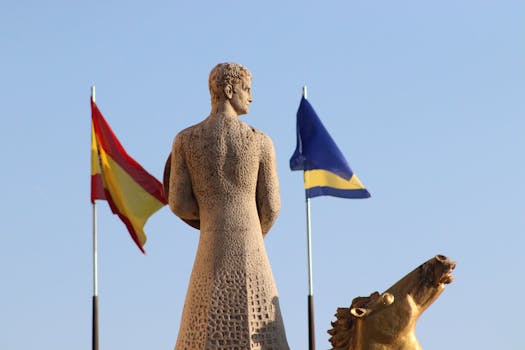
Traveling Through Time: How Europe’s Historical Heritage Shapes Modern Lifestyles in 2025
Traveling Through Time: How Europe’s Historical Heritage Shapes Modern Lifestyles in 2025. Europe, a continent steeped in history and tradition, has a unique ability to transport us through time. From the ancient ruins of Greece and Rome to the medieval castles of England and France, every country in Europe is home to a wealth of historical heritage. But how does this legacy of the past continue to shape modern lifestyles in Europe today?
Introduction to Europe’s Historical Heritage
Europe’s historical heritage is a treasure trove of cultural, architectural, and culinary riches. The continent is home to some of the world’s most famous landmarks, such as the Eiffel Tower, the Colosseum, and Big Ben. These iconic structures not only attract millions of tourists every year but also serve as a reminder of Europe’s complex and fascinating history. From the Renaissance to the Industrial Revolution, Europe has been at the forefront of cultural, scientific, and technological advancements, leaving behind a legacy that continues to inspire and influence modern lifestyles.
The Impact of Historical Heritage on Modern Lifestyles
So, how does Europe’s historical heritage shape modern lifestyles? One of the most significant ways is through architecture. Many European cities are characterized by their historic city centers, with narrow streets, picturesque squares, and grand buildings. These architectural gems not only provide a glimpse into the past but also influence the way people live and interact with their surroundings. For example, the historic city center of Venice, with its canals and ornate bridges, has become a model for modern urban planning, with many cities around the world incorporating similar design elements into their own cityscapes.
Another way in which historical heritage shapes modern lifestyles is through cuisine. European cuisine is renowned for its diversity and richness, with each country boasting its own unique culinary traditions. From Italian pasta to French haute cuisine, and from Spanish tapas to German beer, European food is a reflection of the continent’s complex history and cultural exchange. Modern European cuisine continues to evolve, with many restaurants incorporating traditional ingredients and cooking techniques into contemporary dishes.
Preserving Historical Heritage for Future Generations
As we look to the future, it is essential that we preserve Europe’s historical heritage for future generations. This not only involves protecting and restoring historic buildings and landmarks but also promoting cultural traditions and customs. Many European countries have established organizations and initiatives dedicated to preserving their cultural heritage, such as the European Heritage Label and the European Cultural Foundation. These initiatives aim to raise awareness about the importance of cultural heritage and to support projects that promote its preservation and promotion.
Conclusion
In conclusion, Europe’s historical heritage continues to shape modern lifestyles in profound ways. From architecture to cuisine, the legacy of the past remains an integral part of contemporary European culture. As we travel through time, exploring the rich history and traditions of this incredible continent, we are reminded of the importance of preserving our cultural heritage for future generations. Whether you are a history buff, a foodie, or simply a curious traveler, Europe has something to offer everyone, and its historical heritage is sure to leave a lasting impression.





